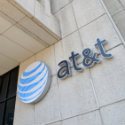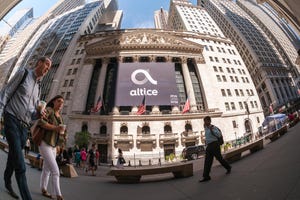
Expect AT&T to launch high-band millimeter-wave mobile 5G in Chicago and Minneapolis sometime in 2019, but don't expect the 5G service to necessarily be as speedy as Verizon's home-brewed fixed wireless "5G Home."
"We’re adding Minneapolis, MN and Chicago, IL to our 2019 5G deployment roadmap," AT&T said in a statement Tuesday. "We are simultaneously working to expand 5G coverage in the dozen cities where we launched 5G last year."
AT&T Inc. (NYSE: T) currently has "parts" of 12 markets deployed with 3rd Generation Partnership Project (3GPP) mobile 5G 39GHz millimeter wave (mmWave) 5G. These include Atlanta, Charlotte, Dallas, Houston, Indianapolis, Jacksonville, Louisville, Oklahoma City, New Orleans, Raleigh, San Antonio and Waco. The first tranche of markets went live on December 21, 2018. (See AT&T's 5G Switches On in 12 US Cities, but Only for 'Early Adopters'.) Now AT&T is saying it will add Chicago and Minneapolis in 2019, as well as the previously announced cities of Las Vegas, Nashville, Orlando, Los Angeles, San Diego, San Francisco and San Jose in 2019. This brings AT&T's footprint to parts of 21 cities in all. See below:
Blue flags indicate AT&T, red flags show Verizon, magenta for T-Mobile and yellow for Sprint. Expand the map to see a larger version and the carriers' overlapping cities.
AT&T has marketed its 39GHz mmWave 5G service, under the brand "5G+," so far. (See AT&T's 5G Switches On in 12 US Cities, but Only for 'Early Adopters'.)
"Due to a number of incremental improvements on both the network and device side, some of our early customers using 5G delivered over millimeter wave spectrum, which we call 5G+, have experienced speeds in the range of 200-300 megabits per second – and even as high as 400 megabits per second," the operator noted.
There is a lot of 5G labeling going on in the US, but the label means different things depending on the context. For example, Verizon says that its maximum 5G Home download speeds are 800 to 900 Mbit/s, with minimum speeds of 300 Mbit/s offered. The difference is that the 5G Home service connects wirelessly to fixed points that can be optimally positioned in one spot for the best performance, rather moving about within the network area. (See AT&T's Nighthawk 5G: Potential Download Could Cover a Wide Range of Speeds and Verizon's Vestberg Mum on 2019 Capex but Ebullient on 5G Prospects.)
The Netgear Nighthawk used exclusively with the AT&T 5G service so far is not expected to go on sale to the public -- at $500 a pop -- until this spring.
AT&T, meanwhile, is planning another low-band 5G launch later in 2019, going nationwide in 2020. The operator expects to have a 5G phone to offer with this service. (See AT&T Low-Band 5G to Arrive With Samsung Phone in 2H19.)
AT&T's CEO, Randall Stephenson, meanwhile, has said that mmWave 5G will be a "real replacement opportunity" for fixed broadband in three to five years’ time. (See AT&T CEO: mmWave 5G Will Be Fixed Broadband Alternative in '3 to 5 Years'.)
That said, the operator's "5G E" service, which is using LTE Advanced upgrades in its 4G network, is currently causing the most fuss over AT&T's "5G" service at present. (See Sprint Sues AT&T Over '5G E' Branding.)
— Dan Jones, Mobile Editor, Light Reading
About the Author(s)
You May Also Like



.jpg?width=300&auto=webp&quality=80&disable=upscale)








